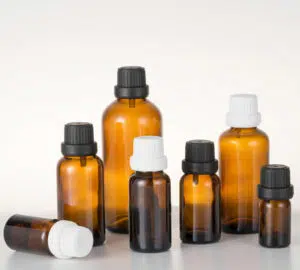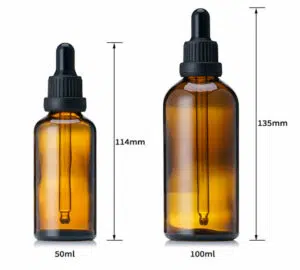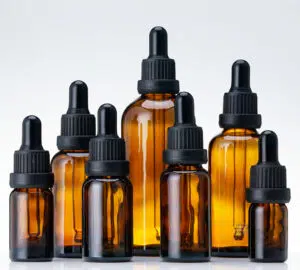In a world where innovation intertwines with sustainability, the realm of pharma packaging stands at the cusp of transformative change. Picture this: a future where medication not only arrives safely at your doorstep but also with minimal environmental impact. The landscape of pharmaceutical packaging is evolving rapidly, embracing new technologies and eco-conscious practices to meet the growing demand for efficiency and environmental stewardship.
As we delve into the realm of pharma packaging, we uncover a tapestry of advancements set to redefine the industry. From smart packaging solutions that enhance patient safety to biodegradable materials that reduce carbon footprint, the future of pharma packaging is a canvas painted with ingenuity and environmental mindfulness. Join us as we unveil the latest innovations and sustainability trends shaping the pharmaceutical packaging sphere, offering a glimpse into a future where efficacy and eco-friendliness harmoniously coexist.

Biodegradable Materials: Paving the Way for Sustainability in Pharma Packaging
One of the key challenges in the pharmaceutical industry is the environmental impact of packaging materials. Traditional packaging materials, such as plastics, can take hundreds of years to decompose, contributing to pollution and waste. However, a promising solution lies in the use of biodegradable materials.
Biodegradable materials are derived from renewable sources and can break down naturally over time without leaving harmful residues behind. These materials offer a sustainable alternative to conventional packaging options, reducing carbon footprint and minimizing environmental harm. In the realm of pharma packaging, biodegradable materials hold immense potential for transforming the industry towards a more sustainable future.
By adopting biodegradable materials for pharma packaging, companies can not only reduce their environmental impact but also enhance their brand image as eco-conscious organizations. Patients and consumers are increasingly demanding sustainable products, and by incorporating biodegradable materials into their packaging solutions, pharmaceutical companies can meet these expectations while contributing to a greener planet.

Personalized Packaging Solutions: Tailored for Patient Needs
In today’s era of personalized medicine, it is only fitting that pharma packaging follows suit. Personalized packaging solutions cater to individual patient needs, ensuring accurate dosing and ease of use.
One example of personalized packaging is blister packs with individual compartments for each medication dose. This not only helps patients keep track of their medication regimen but also reduces the risk of errors in dosage. Additionally, smart packaging technologies can be integrated into these solutions to provide reminders and alerts for medication intake.
Personalized packaging goes beyond convenience; it also plays a crucial role in patient safety. By tailoring packaging solutions to specific patient requirements, healthcare providers can minimize the risk of medication errors and improve treatment outcomes.

Nanotechnology in Pharma Packaging: A Closer Look at Future Possibilities
Nanotechnology is revolutionizing various industries, and pharma packaging is no exception. By harnessing the power of nanotechnology, pharmaceutical companies can enhance the functionality and efficiency of their packaging solutions.
One area where nanotechnology shows promise is in drug delivery systems. Nanoparticles can be used to encapsulate medications, allowing for targeted delivery and controlled release. This not only improves the efficacy of the medication but also reduces side effects.
Furthermore, nanomaterials can be utilized to create antimicrobial coatings for packaging materials, preventing contamination and ensuring product integrity. This is particularly crucial in the pharmaceutical industry, where sterility is paramount.

Regulatory Landscape and Compliance Challenges in Sustainable Pharma Packaging
While sustainability in pharma packaging holds immense potential, it also comes with its fair share of regulatory challenges. The pharmaceutical industry operates under strict regulations to ensure patient safety and product quality.
Introducing sustainable packaging materials may require extensive testing and validation to meet regulatory standards. Additionally, companies must navigate complex supply chains to source sustainable materials without compromising quality or availability.
However, despite these challenges, regulatory bodies are increasingly recognizing the importance of sustainability in pharma packaging. Efforts are being made to streamline regulations and provide clearer guidelines for companies looking to adopt eco-friendly practices.
Digitalization of Track and Trace Systems: Boosting Transparency and Security
The digital revolution has permeated every aspect of our lives, including pharma packaging. Digital track and trace systems are transforming supply chain management by enhancing transparency and security.
By incorporating technologies such as RFID (Radio Frequency Identification) tags or QR codes into packaging materials, pharmaceutical companies can track their products throughout the supply chain. This not only helps prevent counterfeiting but also enables efficient recalls and enhances patient safety.
Furthermore, digitalization allows for real-time monitoring of temperature and humidity conditions during transportation, ensuring the integrity of medications. This is particularly crucial for sensitive drugs that require specific storage conditions.
Circular Economy Models in Pharma Packaging: Promoting Reuse and Recycle Practices
The concept of a circular economy revolves around minimizing waste and maximizing resource efficiency. In the realm of pharma packaging, circular economy models promote reuse and recycling practices.
One example is the use of refillable containers for medications. Instead of single-use packaging, patients can return empty containers to be refilled, reducing waste generation. Additionally, companies can implement recycling programs to collect and recycle packaging materials.
By embracing circular economy models, pharmaceutical companies can reduce their environmental impact while fostering a culture of sustainability among patients and consumers.
Collaborative Initiatives Towards Green Pharma Packaging Solutions
The journey towards sustainable pharma packaging requires collaboration among various stakeholders, including pharmaceutical companies, packaging manufacturers, regulatory bodies, and consumers.
Industry-wide initiatives are being undertaken to drive innovation in sustainable packaging solutions. Collaborative research projects aim to develop new materials with improved environmental profiles while maintaining product integrity. Regulatory bodies are working closely with industry players to establish guidelines that balance sustainability goals with regulatory requirements.
Consumers also play a vital role in driving demand for green pharma packaging solutions. By making informed choices and supporting eco-friendly products, consumers can influence the industry towards more sustainable practices.
Conclusion: Embracing a Future of Innovation and Sustainability in Pharma Packaging
The future of pharma packaging is an exciting landscape where innovation meets sustainability. From biodegradable materials to personalized solutions tailored for patient needs, the industry is undergoing a transformative shift towards eco-conscious practices.
As regulatory bodies adapt to the changing landscape and companies embrace new technologies, we can expect to see more sustainable packaging options in the pharmaceutical market. By working together and embracing a future of innovation and sustainability, we can pave the way for a greener and more efficient pharma packaging industry.